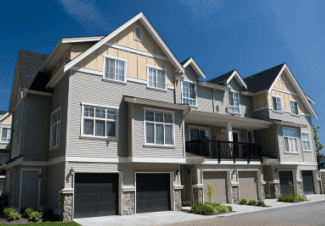4 Ways to Balance the Needs of Pets and Residents in Multifamily Communities
 How one large multifamily operator can balance the needs of pets and residents with more than 4,000 pets living in their multifamily communities.
How one large multifamily operator can balance the needs of pets and residents with more than 4,000 pets living in their multifamily communities.
Pets have become more and more of a priority as so many people continue to spend significant time in their homes. Pets offer many wonderful benefits – companionship to residents who feel isolated, help in reducing stress during challenging times, and the enticement of physical activity through play and exercise.
A recent national study conducted by the American Apartment Owners Association revealed that nearly 90 percent of renters are pet owners and want pet-friendly apartments with access to pet amenities.
These trends are important for multifamily leadership teams to understand as they seek to create communities that are welcoming to pet owners. Additionally, a percentage of their residents will likely be non-pet owners, with preferences that are also important.
Mark-Taylor currently has more than 4,000 pets living in our 60+ portfolio of communities. While sometimes challenging, the four approaches below have allowed us to provide the best customer service to all of our residents and balance the needs of pets and residents.
1. Communicate Pet Policies Clearly
In an Apartments.com article from 2018, 33 percent said they were influenced by pet policy when deciding whether or not to tour a community.
Communities should clearly communicate pet polices through websites, social media, review responses and tours.
Leasing teams should make sure pet policies, cleaning and deposit fees are thoroughly discussed prior to move-in.
For non-pet owners, limitations on the number of pets per unit and enforcing weight and breed restrictions gives peace of mind, and lets them know management knows their living experience is valued.
Communicating available onsite pet amenities and services also lets pet owners know how much you value their furry friends.
2. Create Pet-friendly Spaces
Pet amenities have moved from a perk to a necessity, as pet ownership has increased dramatically the past five years.
To accommodate this increase, think about creating special spaces at each community geared exclusively towards pets.
This helps to pamper pets while providing separation from non-pet owners who may want to distance themselves from high-traffic pet areas.
Amenities, such as doggy doors and back yards in single-family home rentals, or onsite pet spas complete with dog-washing stations and spacious dog parks, have become nearly standard in our communities, keeping both groups happy.
3. Keep Your Community Clean and Quiet
Swift and safe pet-waste disposal is something community management teams should prioritize.
Sanctioned spaces for pets – such as dog parks – help keep waste confined, while resources such as pet waste stations help pet owners maintain responsibility.
Maintenance and community management teams should be encouraged to walk the properties daily to remove anything owners may have missed. Additionally, in order to keep all residents happy, management should work with pet owners if their dogs are barking loudly or disturbing others.
4. Remain Responsive to all Residents
Listening to the growing and changing needs of pet and non-pet owners must remain a priority if community management teams want to thrive and balance the needs of pets and residents.
Dogs barking during the day might not have been an issue in 2019, but as more people work from home, or participate in online school, this can be a challenge.
Take time to create ongoing conversations with residents to understand their needs and how management can help. As situations evolve, management may help residents find solutions through add-on “concierge” services such as Valet Living’s pet-sitting and pet-walking services, Ally Waste’s dog-walking options and other pet care solutions.
Pets will continue to be an important part of many resident’s lives, and communities that cater to pets will be top of mind to meet this trend.
Similarly, children and adults will still need their homes to be quiet places where they can work and participate in online school. Creating inviting spaces for pet-owners and non-pet residents to harmoniously coexist will require management teams to stay on top of industry trends and resident preferences as they thoughtfully balance all resident’s needs.
Source: Rentalhousingjournal.com















 Accessibility
Accessibility